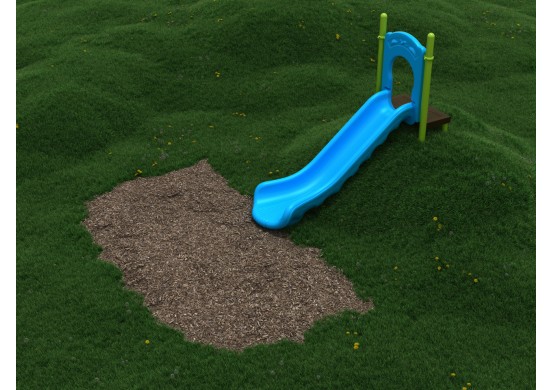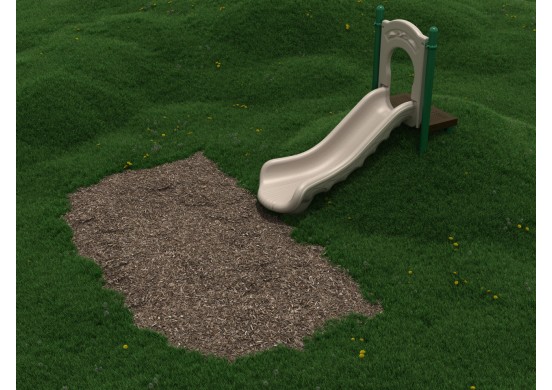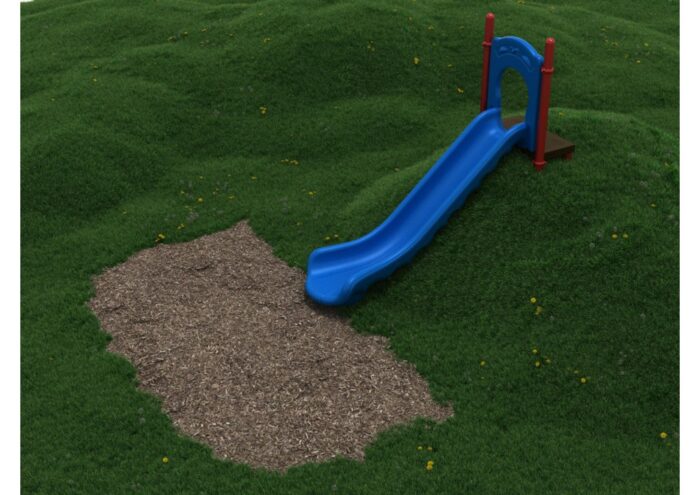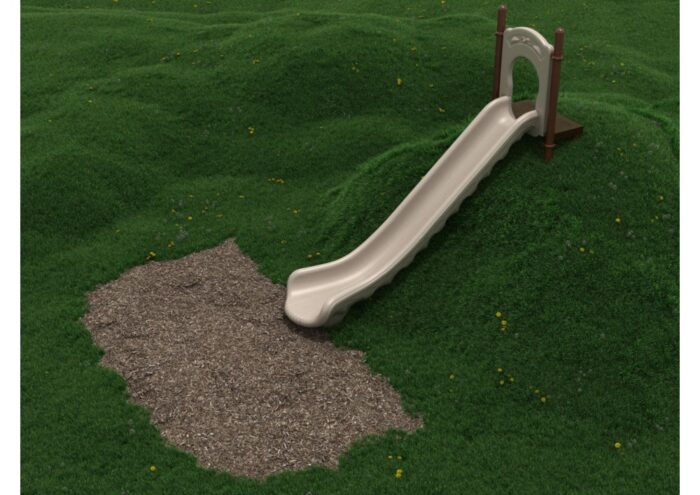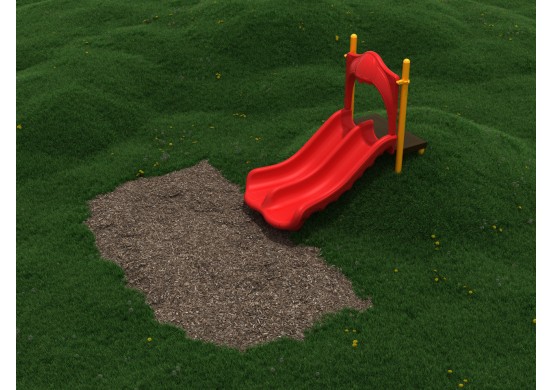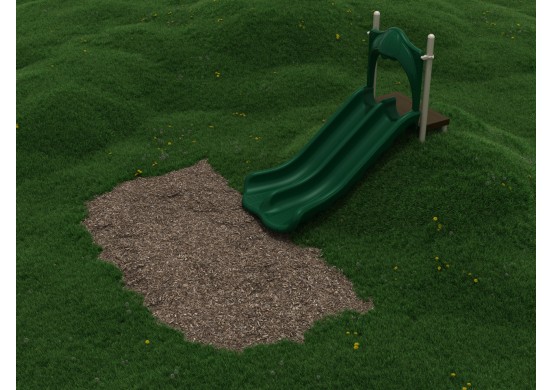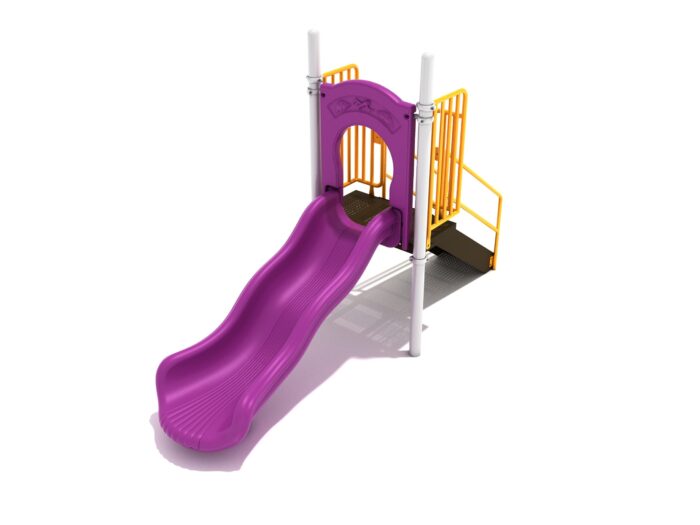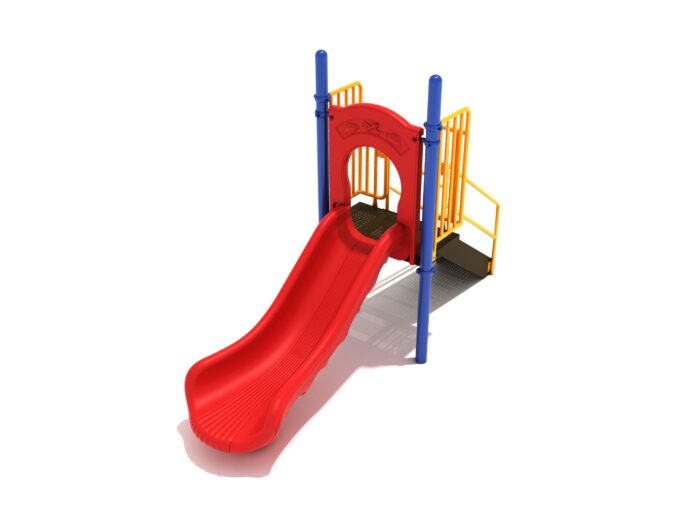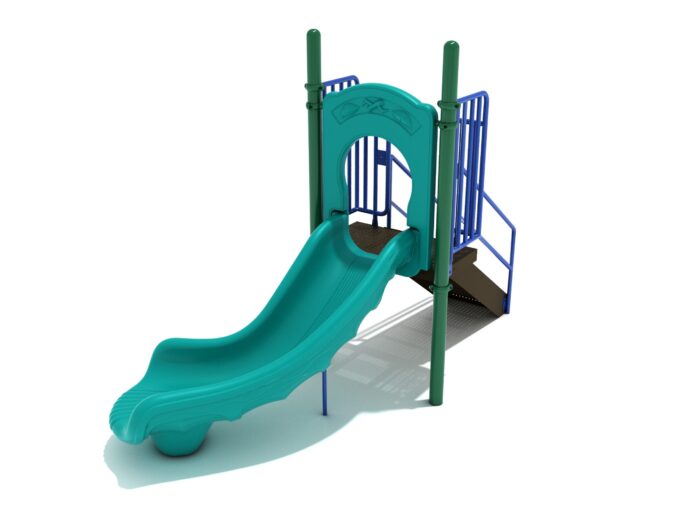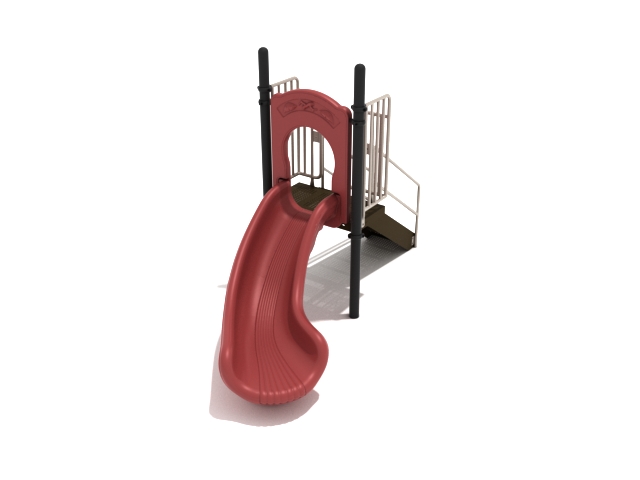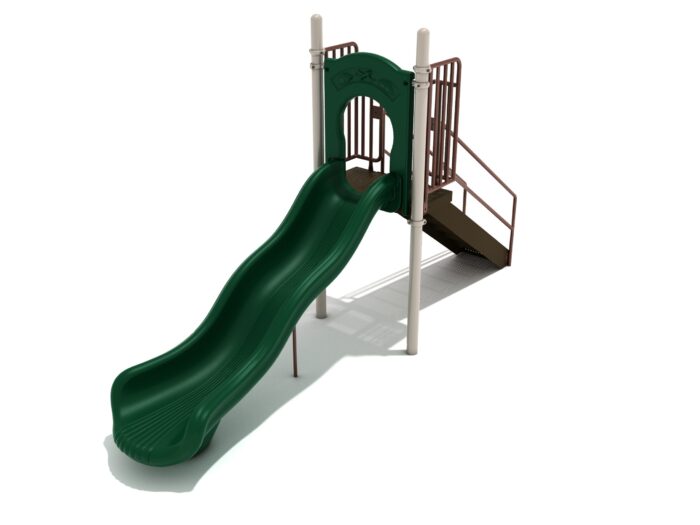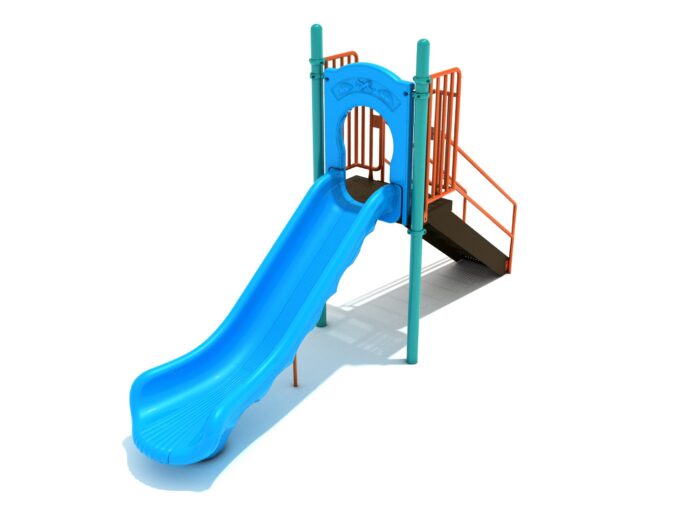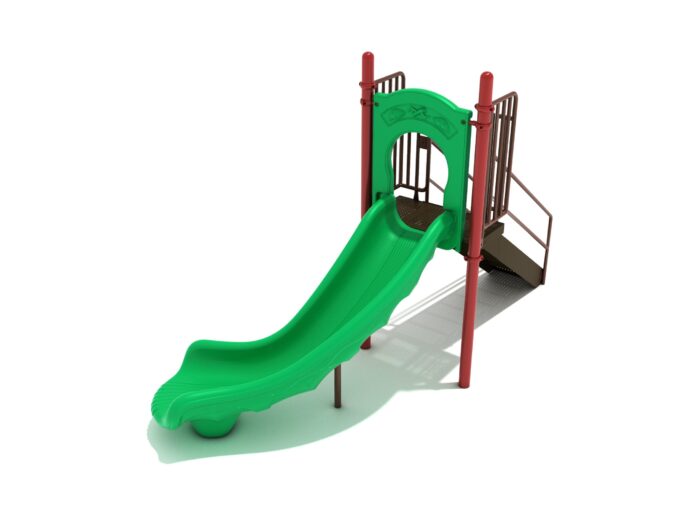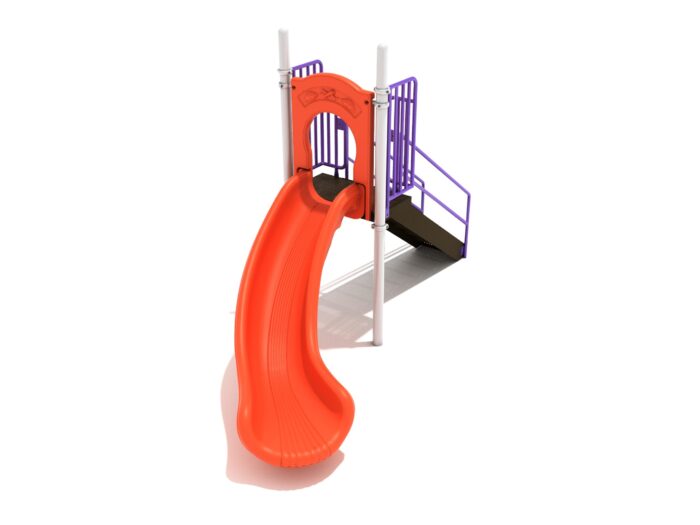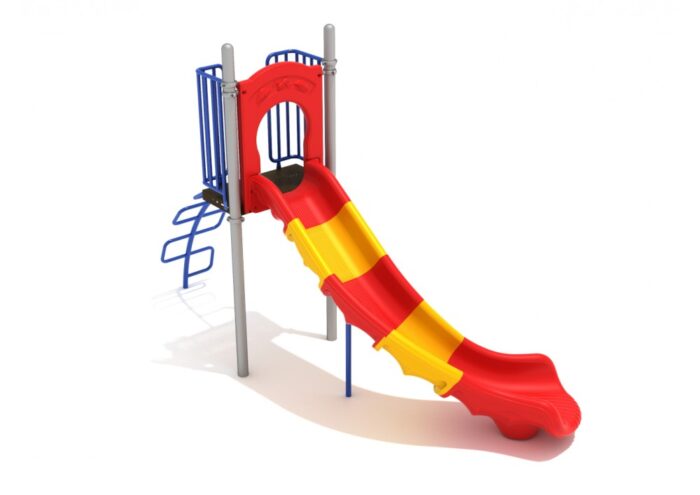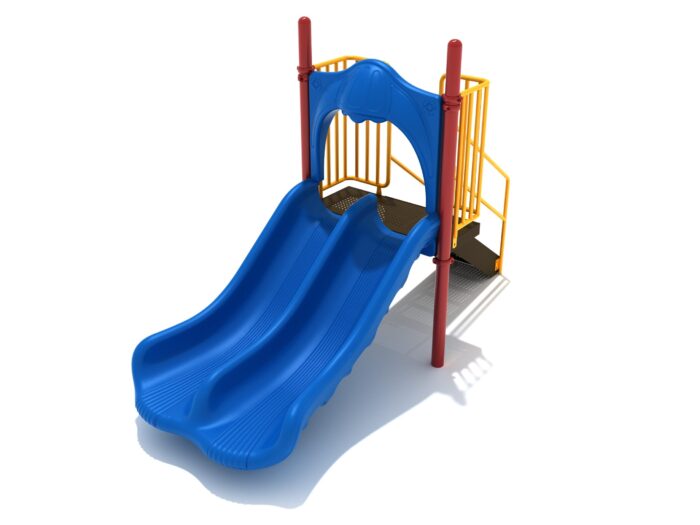Your cart is currently empty!
Slides
- Free Standing Play
- Slides
Showing 1–16 of 54 results
Playground Slides
In the realm of playground equipment, slides stand out as both a beacon of fun and a challenge to design and safety standards. The journey from concept to the laughter of children racing to climb up for another go involves meticulous attention to design and safety, choice of materials, and construction techniques. As playground slides evolve, so do the trends and technologies shaping their development, incorporating age-appropriate features and inclusive designs.
This exploration delves deep into the fabric of what makes slides not just enduring pieces of playground equipment but evolving structures that reflect advancements in safety, materials science, and societal values. From the use of sustainable materials like recycled plastics and bamboo to the implementation of designs that cater to children of all abilities, the landscape of playground slides is as dynamic as it is diverse. Maintenance and longevity practices ensure these cherished structures can provide safe fun for years to come, highlighting the importance of regular inspections and updates. This article provides a comprehensive overview, guiding readers through the intricacies of playground slide design, construction, and upkeep, ensuring every descent is a journey worth taking.
What are playground slides?
Playground slides are fundamental elements in outdoor play spaces, crafted to deliver exhilarating descents from elevated starting points to lower landing areas. These structures are fabricated using a diverse array of materials including metals, plastics, and composite materials, all chosen for their safety, durability, and capacity to maximize enjoyment. Slides vary widely in design, from simple, straight runs suitable for the youngest users to intricate, winding forms that challenge older children. At their core, playground slides serve a dual purpose: they not only provide thrilling experiences that spark joy and laughter but also promote physical activity and foster social interactions among peers. This makes them an indispensable component of any well-designed playground.
Why is design and safety important for playground slides?
The significance of design and safety in playground slides cannot be overstated, primarily because they play a crucial role in preventing injuries and enhancing user experience. A meticulously designed slide ensures that the play structure is not only thrilling but also accessible and appropriate for children of various ages, significantly reducing the likelihood of accidents. Safety considerations, such as employing non-toxic materials and ensuring all edges are smooth, are essential to protect children from potential harm while they play. Furthermore, slides that adhere to stringent safety standards create a positive environment, encouraging active play and instilling confidence in parents and caregivers about the safety of the play space. Ultimately, emphasizing design and safety is fundamental in providing delightful and secure playground experiences for all children.
Preventing injuries
A cornerstone of playground slide design is the prevention of injuries. Safety measures, including the installation of adequate guardrails, the provision of soft landing surfaces, and the adherence to safe slide angles, drastically reduce the likelihood of falls and related injuries. According to the Centers for Disease Control and Prevention (CDC), falls are the leading cause of non-fatal injuries for children aged 0-19, with many of these incidents occurring on playgrounds. Implementing safety features in slide design, such as adequate height guardrails and soft landing zones, can prevent up to 75% of playground-related injuries, showcasing the critical role of safety in playground equipment design. The selection of materials is crucial, emphasizing non-toxic, splinter-free surfaces that can absorb impacts effectively. This approach to injury prevention ensures playgrounds remain environments where children can explore and enjoy without the risk of harm.
Enhancing user experience
The enhancement of the user experience is equally important in the design of playground slides. Thoughtfully crafted slides, featuring diverse heights, curves, and themes, spark children’s imaginations and encourage them to engage in play repeatedly. For instance, the “Magic Mountain” playground in Colorado features a slide with integrated sound effects that mimic wildlife sounds as children slide down, significantly enhancing user engagement and satisfaction. Such innovative designs not only provide thrilling experiences but also promote physical activity and foster social interactions among peers. Accessibility features such as wide slides for assisted use and gentle slopes for the youngest adventurers make the joy of sliding accessible to all children. By focusing on innovation and inclusivity, playground slides provide valuable experiences that promote physical development, foster social interactions, and stimulate imaginative play, ensuring a lasting appeal.
What materials are used in constructing playground slides?
The construction of playground slides leverages a variety of materials, each chosen for their unique properties of durability, safety, and visual appeal. Metals, such as stainless steel and aluminum, are widely used for their strength, longevity, and resistance to elements, making them perfect for outdoor settings. Plastics, including high-density polyethylene (HDPE) and low-density polyethylene (LDPE), are appreciated for their flexibility in design, vibrant colors, and ease of maintenance. Composite materials, like fiberglass and wood-plastic composites, offer a blend of durability, aesthetic qualities, and a touch of natural beauty to playground designs. These materials ensure that slides not only provide endless fun and excitement for children but also adhere to the highest standards of safety and sustainability.
To provide a clearer understanding of why certain materials are preferred over others, the following table compares their key attributes:
| Material Type | Durability | Cost Effectiveness | Environmental Impact | Safety Features | Visual Appeal |
| Stainless Steel | High | Moderate | Low-Medium | Corrosion-resistant, Smooth edges | High, Lustrous finish |
| Aluminum | High | Moderate-High | Low | Lightweight, Corrosion-resistant | Moderate, Metallic look |
| HDPE | High | High | Medium | Splinter-free, Non-toxic | High, Vibrant colors |
| LDPE | Medium | High | Medium | Soft, Flexible, Non-toxic | High, Bright colors |
| Fiberglass | High | Moderate | Medium | Smooth surface, Strong | High, Can be molded into complex shapes |
| Wood-Plastic Composites | Medium-High | Moderate-High | High | Splinter-free, Non-toxic | High, Natural aesthetic |
Metals
Metals are a cornerstone in playground slide construction, valued for their robustness and longevity. Their ability to endure adverse weather conditions makes them a steadfast choice for outdoor installations.
Stainless steel
Stainless steel shines in its role due to its exceptional resistance to corrosion and lustrous finish. It promises enduring beauty and minimal upkeep, standing the test of time.
Aluminum
Aluminum is celebrated for its lightweight nature and strength, facilitating the creation of slides that are both durable and easy to maneuver into various playful shapes.
Plastics
Plastics offer unmatched versatility and a kaleidoscope of colors, providing a safer play surface with their softer, more forgiving nature compared to metals.
High-density polyethylene (HDPE)
HDPE is distinguished by its rigidity and color stability, making it a preferred material for slides due to its resilience against sunlight and frequent use.
Low-density polyethylene (LDPE)
LDPE stands out for its softer composition and flexibility, ideal for crafting slides for younger children that prioritize safety and gentle enjoyment.
Composite materials
Composite materials excel in combining durability with visual appeal, offering innovative design possibilities and environmental adaptability.
Fiberglass
Fiberglass is favored for its slick surface and excellent strength-to-weight ratio, enabling the creation of slides with complex designs and vivid hues.
Wood-plastic composites
Wood-plastic composites blend the aesthetic of wood with the durability of plastics, producing slides that harmonize with natural surroundings while requiring minimal maintenance.
How does construction impact playground slide safety and durability?
The construction process plays a pivotal role in determining the safety and durability of playground slides. By selecting durable materials, slides are equipped to endure constant use and exposure to the elements, ensuring they remain safe and functional over time. Precision in assembly is equally critical; meticulous construction techniques and secure fastenings eliminate potential hazards, such as loose parts or structural instability, that could lead to injuries. Furthermore, careful attention to finishing details, like the smoothing of edges and reinforcement of support structures, directly enhances the safety of young users. Therefore, the integrity of construction not only prolongs the lifespan of playground slides but also upholds the paramount importance of child safety.
To illustrate the impact of construction on playground slide safety and durability, the following table provides examples of how the choice of materials and precision in assembly contribute to these outcomes:
| Construction Aspect | Example Impact | Best Practice Case |
| Use of Durable Materials | Choosing stainless steel for its corrosion resistance extends slide life. | A community playground in Coastal City uses stainless steel slides, significantly reducing rust-related maintenance over 10 years. |
| Using HDPE for its UV resistance maintains color and structural integrity. | Sunshine Park’s HDPE slides show minimal color fading and wear after years of exposure to direct sunlight. | |
| Precision in Assembly | Properly aligned and secured joints prevent wobbling and ensure stability. | Adventure Land Playground underwent a redesign to incorporate precision-engineered joints, eliminating previous stability issues. |
| Smooth finishing and secure fastenings eliminate sharp edges and loose parts. | Safety First Playground implemented a double-check assembly protocol, resulting in a 40% decrease in minor injury reports. |
Use of durable materials
The choice of durable materials is essential for crafting playground slides that endure. Opting for robust materials such as stainless steel, HDPE, and fiberglass ensures that slides maintain their structural integrity over years of use and exposure to varying weather. This careful selection significantly reduces the necessity for frequent maintenance, thereby extending the playground equipment’s service life and enhancing safety.
Precision in assembly
Precision in assembly is paramount to the overall safety and longevity of playground slides. Meticulous construction techniques that ensure all components fit together flawlessly eliminate potential hazards like gaps or misalignments, which could undermine the slide’s stability. Thoroughly securing each part in place prevents the loosening of components over time, a critical factor in upholding the slide’s safety standards. Such detailed attention during the assembly phase ensures that slides are not only safe for child play but also durable against the test of time.
What constitutes age-appropriate design for playground slides?
Age-appropriate design for playground slides is crucial to meet the distinct developmental stages and safety needs of varying age groups. For toddlers, slides are intentionally crafted with lower heights and gentle slopes, providing a safe and encouraging environment for early motor skill development. As children grow, the design evolves; for school-aged children, slides feature taller structures and more complex designs. These may include exciting elements like curves and tunnels, designed to challenge their physical capabilities and stimulate imaginative play. This careful consideration in design ensures that playground slides are not only sources of enjoyment but also support developmental milestones in a safe setting.
To provide more actionable insights for playground designers or caretakers, the following table outlines age ranges for these categories and explains how designs cater to the developmental needs of each group:
| Age Group | Design Feature | Description | Age Range | Developmental Needs Addressed |
| Toddlers | Lower Heights | Slides under 4 feet, suitable for easy climbing and safe descent. | 1-3 years | Supports early motor skill development, encourages physical activity in a safe manner. |
| Gentle Slopes | Slopes that allow for a slow, controlled descent. | 1-3 years | Minimizes the risk of injury, suitable for toddlers’ developing balance and coordination. | |
| School-aged Children | Taller Structures | Slides that are taller than 4 feet, offering a more thrilling experience. | 4-12 years | Challenges physical capabilities, promotes healthy risk-taking and confidence. |
| More Complex Designs | Slides with added features such as curves, tunnels, and waves. | 4-12 years | Stimulates imaginative play, enhances problem-solving skills, and encourages social interaction. |
For toddlers
For the youngest adventurers, playground slides are thoughtfully designed with lower heights. This consideration ensures both safety and accessibility, making it easier for toddlers to climb and enjoy the slide without overwhelming them or compromising their security.
Gentle slopes
Incorporating gentle slopes into toddler slides is essential for controlling the descent speed, thereby minimizing the risk of injury. This design choice supports the early development of physical coordination and confidence in a safe and nurturing play environment.
For school-aged children
As children mature, playground slides adapt to meet their growing need for excitement with taller structures. This evolution in design offers older children the thrilling experiences they seek, while still maintaining a focus on safety.
More complex designs
To engage the more sophisticated interests and capabilities of school-aged children, slides feature more complex designs. Elements such as twists, turns, and tunnels challenge their physical dexterity and problem-solving skills, providing a stimulating and enjoyable play experience that encourages imaginative exploration.
What are the current trends in playground slide design?
Today’s playground slide designs are increasingly focusing on natural and eco-friendly materials, inclusive design, and innovative structures to cater to a broad spectrum of children. Materials like bamboo and recycled plastics are gaining traction for their sustainability and minimal environmental impact, reflecting a shift towards more eco-conscious playground choices. Inclusivity is at the forefront, with designs incorporating wide slides for assisted use and ramps and transfer stations, ensuring that children with disabilities can enjoy the playground alongside their peers. Moreover, the push for creativity has led to slides featuring more complex and engaging structures, which not only challenge and entertain children but also encourage imaginative play and physical activity. These trends highlight a comprehensive approach to playground design, where safety, environmental responsibility, and inclusivity are key priorities.
To highlight the impact of these trends, the following table provides examples of specific playgrounds that have successfully implemented these trends and shares feedback from communities about these features:
| Trend | Implementation Example | Playground Name | Community Feedback |
| Natural and Eco-friendly Materials | Use of bamboo and recycled plastics in slide construction. | Green Haven Park | “We love how the playground blends with the natural environment and supports sustainability.” |
| Inclusive Design for Children with Disabilities | Installation of wide slides for assisted use and ramps. | Inclusive Adventure Playground | “Our child feels welcome and can play alongside peers, which is wonderful for his social development.” |
| Innovative Structures | Slides with complex designs, including curves, tunnels, and interactive elements. | Imagination Land | “The innovative slides keep my kids engaged for hours. They love the challenges and surprises.” |
Natural and eco-friendly materials
The trend towards natural and eco-friendly materials in playground equipment, especially slides, underscores a commitment to environmental stewardship. These materials are selected for their low environmental impact and harmonious integration with outdoor settings.
Bamboo
Bamboo is celebrated for its sustainability, rapid regeneration, and strength, making it an ideal material for eco-friendly playground designs. Its natural beauty adds a unique aesthetic to playgrounds, enhancing the overall play experience.
Recycled plastics
Using recycled plastics in slide construction not only supports environmental conservation by repurposing waste but also offers a durable and vibrant alternative to traditional materials. This approach contributes to a more sustainable future while providing safe and engaging play equipment.
Inclusive design for children with disabilities
Adopting inclusive design principles in playground slides ensures that children with disabilities can enjoy playful experiences alongside their peers. This thoughtful approach fosters inclusivity, enabling all children to participate in and benefit from play.
Wide slides for assisted use
Designing wide slides for assisted use allows caregivers to accompany children with disabilities, ensuring a supportive and inclusive play environment. This feature promotes safety and enjoyment for children needing assistance, making play accessible to everyone.
Ramps and transfer stations
Integrating ramps and transfer stations in playgrounds makes slides more accessible to children with mobility challenges. These essential elements enable easy access, ensuring that the joy of sliding is an experience shared by all children, regardless of their abilities.
How should playground slides be maintained for longevity?
To ensure the longevity and safety of playground slides, adopting a comprehensive maintenance strategy is vital. Conducting regular inspection routines is the first step, focusing on spotting any early signs of wear and tear. This includes looking out for rust and corrosion on metal slides, as well as cracks and splits in plastic or wooden structures. Prompt repair and replacement of worn parts are necessary to prevent minor issues from becoming significant safety risks. Moreover, updating fasteners and joints, along with replacing slide surfaces when they show signs of deterioration, are crucial practices to maintain the slide’s structural integrity and ensure its continued safe use. Through diligent maintenance, playground slides can remain a source of joy and safe play for countless children over the years.
To provide practical advice, below is a detailed maintenance schedule or checklist, alongside a case study of a playground that improved its slide longevity through diligent maintenance.
Maintenance Schedule/Checklist:
| Task | Frequency | Details |
| Visual Inspection | Daily | Check for visible damage, vandalism, or wear. |
| Rust and Corrosion Check | Monthly | Inspect metal components for signs of rust or corrosion. |
| Crack and Split Inspection | Monthly | Examine plastic and wooden parts for cracks, splits, or splinters. |
| Fastener and Joint Update | Semi-annually | Tighten loose fasteners and inspect joints for wear or damage. |
| Surface Replacement | As needed | Replace slide surfaces showing extensive wear or damage. |
| Soft Landing Surface Maintenance | Weekly | Ensure soft landing surfaces are intact, clean, and properly positioned. |
Case Study: Sunshine Park Slide Longevity Improvement
Background: Sunshine Park faced challenges with its playground slides deteriorating faster than anticipated, leading to increased maintenance costs and safety concerns.
Action Taken: The park management implemented a rigorous maintenance schedule, focusing on regular inspections and timely repairs. They also invested in training for the maintenance staff to recognize and address potential issues promptly.
Results: Within a year of implementing the new maintenance strategy, Sunshine Park saw a 50% reduction in repair costs for its playground slides. The slides’ lifespan extended significantly, and the park recorded a decrease in safety incidents related to slide use. Feedback from the community highlighted an increase in satisfaction with the playground’s condition and safety.
Conclusion: The case of Sunshine Park demonstrates the importance of regular maintenance and the positive impact it can have on the longevity and safety of playground slides. By adhering to a structured maintenance schedule and investing in staff training, playgrounds can ensure their slides remain a safe and enjoyable part of the play experience for years to come.
Regular inspection routines
Regular inspection routines are the cornerstone of maintaining playground slides. These systematic checks are designed to assess every aspect of the slide’s condition, ensuring that it remains safe and enjoyable for children to use.
Checking for rust and corrosion
For metal slides, checking for rust and corrosion is imperative. These elements can quickly compromise the structural integrity of the slide, making prompt detection and action essential to maintaining safety.
Inspecting for cracks and splits
When it comes to slides made from plastic or wood, inspecting for cracks and splits is crucial. Such imperfections not only mar the slide’s appearance but can also pose injury risks, highlighting the importance of early identification and resolution.
Repair and replacement of worn parts
The repair and replacement of worn parts is a critical maintenance task. Addressing these issues promptly prevents them from evolving into more serious concerns that could endanger users’ safety.
Updating fasteners and joints
Ensuring the stability and durability of the slide involves updating fasteners and joints. Regular examinations help in identifying any components that may have loosened over time, securing the slide’s structural safety.
Replacing slide surfaces
Replacing slide surfaces that are extensively worn or damaged is key to preserving the slide’s functionality and user safety. This maintenance step is vital for keeping the sliding experience smooth and enjoyable, extending the equipment’s lifespan.
What are the long-term benefits of proper maintenance and design of playground slides?
Proper maintenance and thoughtful design of playground slides bring about substantial long-term benefits, notably in ensuring safety over time and sustaining appeal and usability. Through diligent maintenance and the selection of durable, safe materials for construction, playground slides remain secure environments, significantly reducing the risk of accidents and injuries. Furthermore, slides that are both well-designed and well-maintained retain their visual and functional appeal, continuing to draw children for active play and enjoyment. These efforts not only prolong the operational life of the playground equipment but also play a crucial role in supporting the physical and developmental well-being of children. This makes the commitment to regular upkeep and intelligent design fundamental to fostering enduring, positive experiences in community play areas.
Ensuring safety over time
Ensuring safety over time stands as a critical advantage of consistent maintenance and thoughtful design of playground slides. Through routine checks and timely interventions, potential hazards are mitigated, safeguarding a secure play environment for children. This relentless focus on safety helps in preserving the playground’s integrity, ensuring it remains a cherished space for fun and growth for countless future generations.
Sustaining appeal and usability
Sustaining appeal and usability emerges as a key benefit of meticulous slide maintenance and innovative design. By maintaining slides in prime condition and adapting designs to reflect contemporary standards and preferences, playgrounds continue to draw families and foster active, social play among children. This enduring attractiveness not only boosts community engagement but also significantly contributes to the physical and social development of young users, underscoring the importance of ongoing investment in playground care and design creativity.

